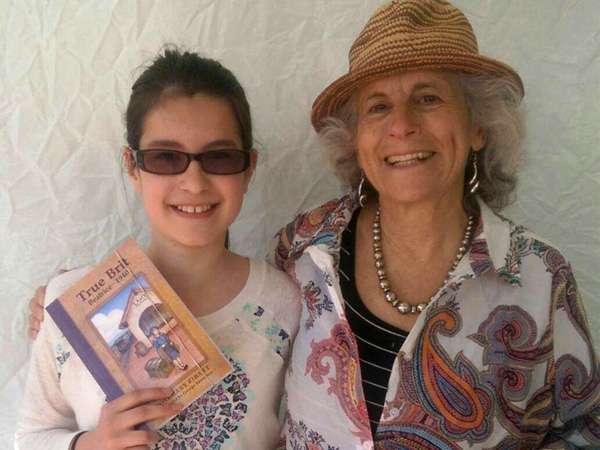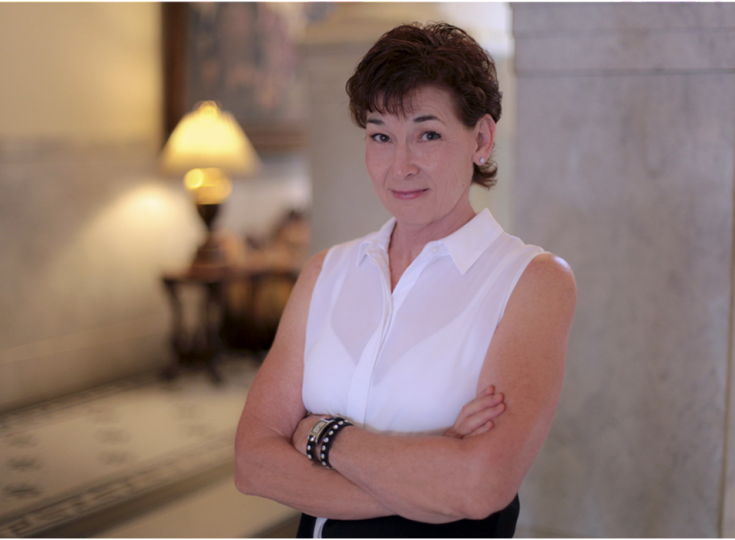Rosemary Zibart - Compelling Stories Featuring Children Impacted by WWII

Rosemary Zibart is an award-winning playwright and children’s book author. Her charming picture books include I have a Grandma who… (for passionate boomer grandmas) and Kit Coyote: A Brave Pup (for foster children). Her first two middle-grade novels, True Brit: Beatrice, 1940 and Forced Journey: The Saga of Werner Berlinger, featured youths dislocated by World War 2, and both won the New Mexico Book Award for historical fiction and Nautilus Awards for historical fiction. Ms. Zibart lives in Santa Fe with her husband and family. Learn more about her at www.rosemaryzibart.com. As our Author of the Day, she tells us all about her book, Beatrice On Her Own.
Please give us a short introduction to what Beatrice on Her Own is about.
Beatrice Sims is an upper-crust English girl who flees wartime England for refuge in the United States. In my first book True Brit, Beatrice adjusts to the radically new landscape and culture of New Mexico with help from her host, Clementine “Clem” Pope, a public health nurse who works in local villages and pueblos. In the first page of Beatrice on Her Own, we learn the bombing at Pearl Harbor has just happened — and the United States is thrown into WWII. Clem is called to Washington to train nurses. So Beatrice must adjust to a new living situation and become much more self-reliant. She becomes active with the local Canine Corps that trains dogs for the U.S. Army. When a Japanese Internment Camp is constructed on the edge of town, Beatrice tries to balance local anger against the enemy Japanese with the injustice of Japanese-American citizens being imprisoned.
Why did you pick Santa Fe, New Mexico as the backdrop for your story?
The longer I live in Santa Fe, the more I learn about its fascinating history. In the 1920’s, 30’s and 40’s, in particular, the town was populated with many bold, independent and unusual people — especially women. And that’s who I like to write about.
Tell us more about Beatrice. What makes her tick?
Beatrice comes from a very upper crust background (think Downton Abbey), so she doesn’t know anything about other cultures. In addition, she’s never had to look out for herself so Clem calls her a “little princess”. But Beatrice doesn’t want to be a little princess, she wants to pitch in and be useful. And as the story develops, she grows more confident, more courageous and resourceful. She also very faithful to her friends, good-humored Arabella and moody Esteban, and has a good sense of humor.
What inspired you to pick this time frame to set your story in?
WWII history is great to write about because many children faced big challenges — especially those who moved away from the security of their homes and families and experienced a different part of the world and different values. In addition, the “rights” and “wrongs” of the war were much clearer than what we experience at other times in history. The Nazis and their allies were terrible. The Allies were good (for the most part). The response of the United States to the war was pretty solid and coherent once war was declared. But within the big picture, there are a lot of little pictures — a lot of personal dilemmas and choices. And that’s what creates conflict and all stories begin with some sort of conflict.
How much research did this book require from you to make the history-part ring true?
A lot. I read a lot about WWII either in books or on-line. And I watch shows on TV related to WWII. It continues to interest me.
What was the most interesting aspect of this research?
I learned a lot more about the Japanese Internment Camp than most people in Santa Fe know. The camp had its own internal organization — its own newspaper, a garden for vegetables, and other activities. Some of the Japanese were artists. So I create a character, Francis, a boy who’s just come to Santa Fe. He’s a loner and also a budding artist whom Beatrice befriends. Francis happens to know one of the Japanese men in the camp because the man owned a flower shop in San Diego where Francis used to live and turned Francis onto painting. That’s how Beatrice becomes connected to the camp and why she attempts to protect it from an attack by angry locals. This sort of background makes for a richer story.
You are an award-winning playwright. How different is this from writing a novel?
Wow — every genre has its own demands and its own rewards. Plays for me are very condensed in time and space. They usually transpire in a few hours or a few days. They usually occur in one or two locations — the fewer the better. They’re all dialogue, just about. Though, as in any story, there’s major conflict and something happens. The main character makes a decision that leads to the outcome, good or bad. Novels can take place on a much wider panorama of time and place. In my Beatrice books, the setting in New Mexico is very important because Beatrice is awakening to the beauty of this new environment. That wouldn’t be possible to show in a play. That’s why it’s easier to turn a book into a screenplay (for a film) than a play.
Besides writing, what other secret skills do you have?
Well, actually I make very good soups and pies. Soups consist of a lot of different ingredients (whatever you happen to have in the refrigerator) which you put together and you taste it as you go. Pies also have a few basic rules to follow and then you can improvise. I think that’s basically the same as writing fiction.
Which of your characters was the most challenging to create?
I don’t think any of the characters were difficult to write — but I had a “villain” in Beatrice on Her Own and I’ve never had the fun of creating a truly nasty character before. But he really is pretty spooky. And you don’t understand who he is until the very end. He’s also based on a real historical person that I was so very, very lucky to discover.
You often pick young protagonists for your books. Why do you take this approach?
They say that the ages 8-12 are the “unreluctant years” — meaning that many young people are voracious readers during that time — their brains are opening up and they’re eager to learn about people and places beyond their own families and neighborhood. That’s why I love to write for this age group — I’m particularly eager to show them how history is not boring. History is about people who faced issues very similar to what kids today face — loneliness, separation, illness, love, responsibility.

In which way is Beatrice on her own a coming-of-age story?
When her wonderful host Clem leaves town, Beatrice no longer has someone she can rely on to guide and make decisions for her. She ends up living with her best friend, Arabella, but Arabella’s household is extremely tumultuous. And Beatrice soon figures out that she must care for her friend rather than vice-versa. Her relationship with another special friend, Esteban, is also jeopardized by various events — and Beatrice has to deal with all these challenges on her own. She has to figure out what she believes and what’s important to her and then take action — that’s growing up.
Do you have any interesting writing habits? What is an average writing day like for you?
If I’m in the middle of a story, either a play or a novel or a screenplay, I usually sit down and start writing between 9 and 10. Before that, I take a walk and tidy up a bit. I’m too restless to sit right down. If I’m between stories, then it usually takes longer to get started. And sometimes I don’t begin until the afternoon. It doesn’t matter when I start, what counts is really focusing on what needs to get done.
What are you working on right now?
I adapted True Brit and another book for young people, Forced Journey, into screenplays with the hope they could become films. And I’m still working on these — rewriting them to make them stronger and have more emotional resonance. I also have a new manuscript that I’m going to revise a bit soon called Lone Girl about the first woman physician, Elizabeth Blackwell, and the orphan girl Kitty she adopts. And finally, I need to start researching a 3rd Beatrice book — because readers who’ve read the first two are demanding to know what happens to Beatrice….
Where can our readers discover more of your work or interact with you?
I have a website www.rosemaryzibart.com. Also, they can write me at [email protected]. I love to hear from readers or writers!! Thanks again for your interest. I enjoyed answering your questions.






